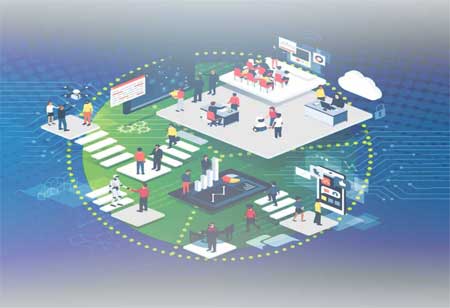THANK YOU FOR SUBSCRIBING
Transforming Manufacturing: 5G-Powered Factory Digitalisation
Manufacturers and facility managers have embraced the digitalisation of factories to a large extent to remain competitive.

By
Apac CIOOutlook | Tuesday, October 31, 2023
Stay ahead of the industry with exclusive feature stories on the top companies, expert insights and the latest news delivered straight to your inbox. Subscribe today.
This comprehensive exploration highlights how 5G enables the digitalisation of factory operations, offering the potential for real-time data exchange and decentralised computing resources on the factory floor.
FREMONT, CA: Manufacturers and facility managers have embraced the digitalisation of factories to a large extent to remain competitive. A budget has been set aside for the execution of digitalisation plans by almost 91 per cent of manufacturing companies. The average C-level managers in the industrial sector know the value of data-driven performance measurement.
Data can be collected, accurately stored, and used across many aspects of manufacturing operations with the help of digital transformation. For instance, transferring sales data and ledgers into digital formats enables forecasting tools to analyse demand. This data-driven understanding is the foundation for resource allocation and procurement decisions for future production cycles.
Demand forecasting is one industrial process that can be digitalised to provide helpful information on the efficiency of production and equipment. Comparative analysis improves production cycles by identifying and addressing production gaps. IoT and edge devices collect data during larger-scale transitions, enabling digital twins and various business models like condition monitoring. 5G networks are necessary for efficient data transfer between these technologies and the production floor.
By 2025, the worldwide industrial sector is anticipated to use IoT devices worth $575.36 billion. The industry's initiatives to improve automation and safety in production environments fuel this rise. A fundamental difficulty is enabling adequate data flow from various IoT devices and data-generating equipment to centralised storage or analytical systems. Wired networks cannot handle the volume of data sources, and 4G networks must have the required reliability. The adoption of 5G technology is essential to addressing these problems. A low-latency and dependable communications network is beneficial for adopting digitalisation plans on the manufacturing floor, even though it is not completely dependent on 5G.
5G's modular deployment allows manufacturers to expand network capacity by adopting new IoT and edge systems. For instance, when adding a new automated guided vehicle system with fifty IoT devices, simply installing an additional 5G box suffices, offering cost-effective scalability compared to wired networks. Moreover, 5G proves more economical than alternative wireless options, including 4G, enabling real-time data transfer, like 4k videos, and facilitating reliable communication for enhanced digital infrastructure on the factory floor.
The 5G implementation is intended to be customised by manufacturers to meet their unique requirements, primarily focusing on supporting edge computing assets on the production floor. For real-time decision-making, edge hardware will decentralise computing resources and communicate with other nodes in the network over 5G for seamless data transfer.
The capabilities to build unique apps are provided by this 5G-enabled edge platform for improved operational performance. Additionally, sophisticated servitisation is made possible by 5G networks, allowing for quick problem resolution for serviced equipment and optimising product-service systems in accordance with contractual requirements, hence increasing the potential for revenue generation. Supporting communications between devices and machines is another use that could be used. For instance, 5G enables real-time system data transfer when using a wearable device to monitor automated systems, enabling the support staff to make safety-related choices immediately.





